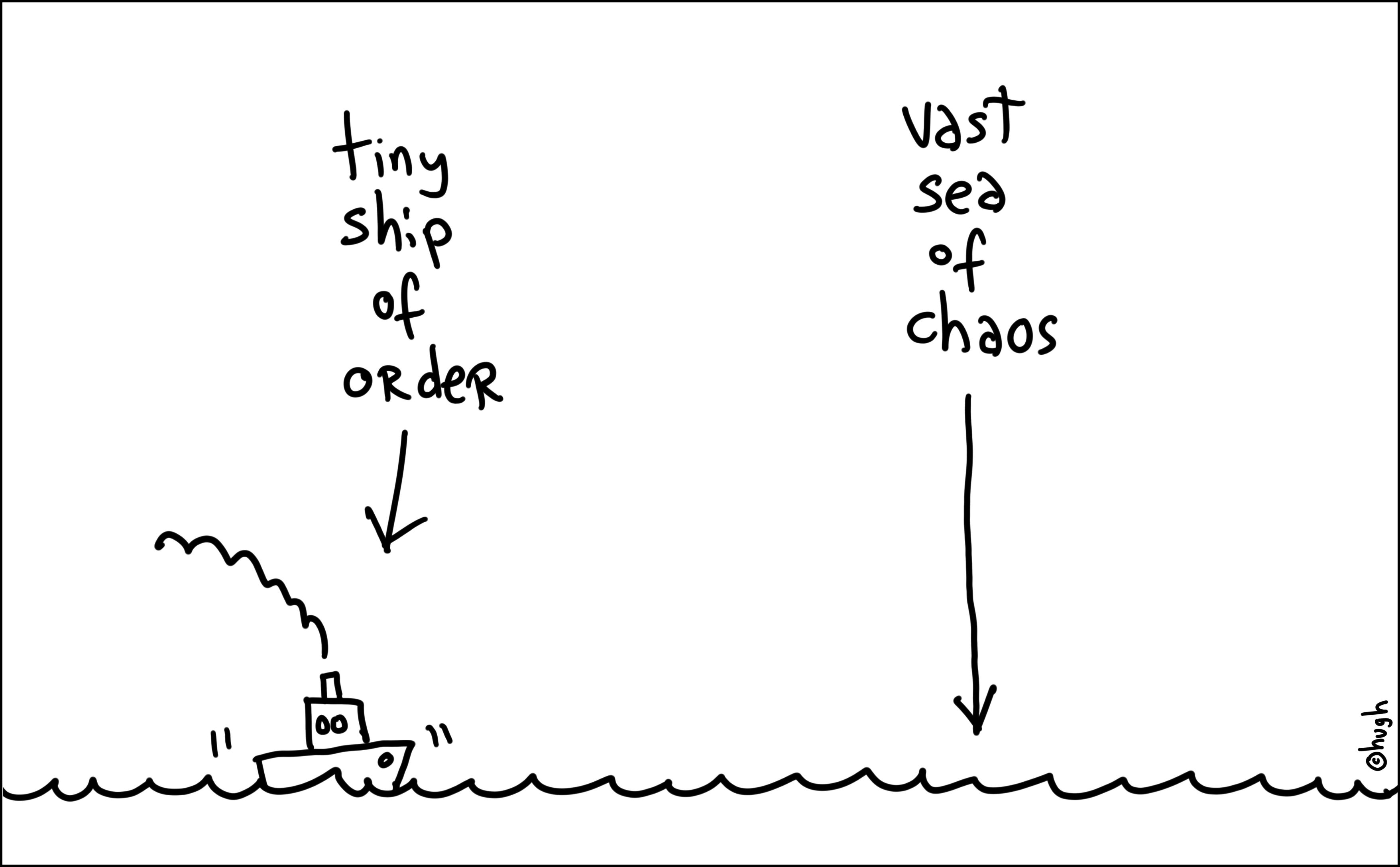Now that I have participated in a mooc, I am naturally qualified to dispense expert advice about them. Lol!
Seriously though, one aspect of moocs that I think requires urgent attention is the sense that many participants feel of being overwhelmed. This was certainly the case for some in the EDCMOOC, and I fear I was too dismissive of the issue in my previous blog post.
Upon further reflection, I appreciate that what gave me an edge in this mooc was my experience in studying at postgraduate level. By that I don’t mean so much the knowledge acquired from the instructors, but (on the contrary) the skills developed in learning how to learn for myself.
You see, in postgrad you are left very much to your own devices. You are given a tonne of readings, and the most instruction you can hope to extract from the professors is “read this”. The theory is that the students will collaborate with one another, share their diverse experiences, and contribute to robust conversations. Too bad most of them are straight out of undergrad, inexperienced, and don’t have a collaborative bone in their body.
So if you actually want to learn something rather than skate through each subject, it’s up to you to do your prescribed readings, seek more from blogs and journals to enhance your understanding, reach out to your network to ask questions and gather feedback, and generally drive your own education.
The successful postgraduate student is highly motivated, autodidactic, connected, and participatory. I suggest the successful mooc participant shares these same qualities.
So what I’m really trying to say is: I’ve been there, done that. If you trust me, you may find the following tips useful as you embark on your own mooc voyage…

Tip 1
Before doing anything, ask yourself three fundamental questions.
Firstly: “Why a mooc?” It may very well be the right mode of study for you, but of course there are many others to consider. Compare the advantages and disadvantages of this mode in light of your personal circumstances.
Secondly: “Why this mooc?” There are plenty of them around, pitched at different levels and targeting different audiences. Analyse the pre-information of your chosen mooc to ensure it will give you what you need.
Thirdly: “What do I want to get out of it?” Be very clear in your own mind about the WIIFM, then doggedly pursue that during the mooc.
Having said that, remain open to new ideas that foster other lines of inquiry. Your goals may change. That’s fine; it’s called learning.
Tip 2
Follow the sequence of the curriculum as arranged by the mooc coordinators. It may be tempting to jump ahead or even lag behind, but it’s wiser to pace yourself week by week.
Tip 3
Read the mooc’s instructions! I’ve added the exclamation point in case you think words on screen are merely decorative. Sometimes they’re informative, so take notice.
Tip 4
Prioritise the core videos and readings. At the very least, all these should be watched and read. The other stuff is a bonus if you get around to it.
Tip 5
Participate actively in the discussion forum. This is your opportunity to share your understanding of the key concepts with your peers and receive valuable feedback from them.Don’t just talk at your peers, but rather engage with them. Reply to their posts, build upon their ideas and suggest alternative thoughts. Challenge them (politely) to clarify their position if they appear to be waffling.
Tip 6
Blog. More specifically, use your blog to articulate your learnings from the mooc. Focus on the practical applications that you have drawn from the academic concepts.I found it helpful to use the discussion forum to post preliminary drafts of my ideas, refine them, then blog them.
Tip 7
Concentrate your discussion activity on only one or two threads each week. You’ll go mad trying to keep up with all of them, so narrow your field of vision to what really matters to you.At the end of the week, abandon those threads. Again, this is about pacing yourself. While the conversation may be rich and rewarding, you can’t afford to go down any rabbit warrens.If you’re super keen, you can always continue the conversation with your new-found friends after the mooc has ended.
Tip 8
Pick a social media platform to support your progress. I made the mistake of bouncing between Twitter, Google+ and Facebook in case I missed out on anything, but all that did was waste my time. Next time I’ll pick my favourite platform and stick with it.
Tip 9
Do something daily. Whether it’s watching a video, reading an article, discussing an idea, writing a blog, liking something on Facebook, or mulling over a thought in your mind, it’s important to keep the momentum going.
Tip 10
Think of moocing as informal learning. If you remember your WIIFM, it will ease the pressure that you put on yourself. You don’t have to finish the course. In fact, you don’t have to do anything. Assume control of your own actions, and become the master of your destiny.
In other words, be the tiny ship of order in the vast sea of chaos.









